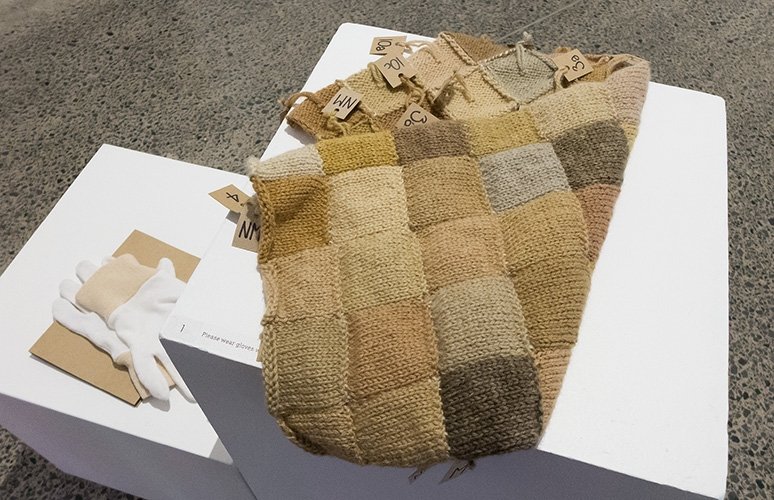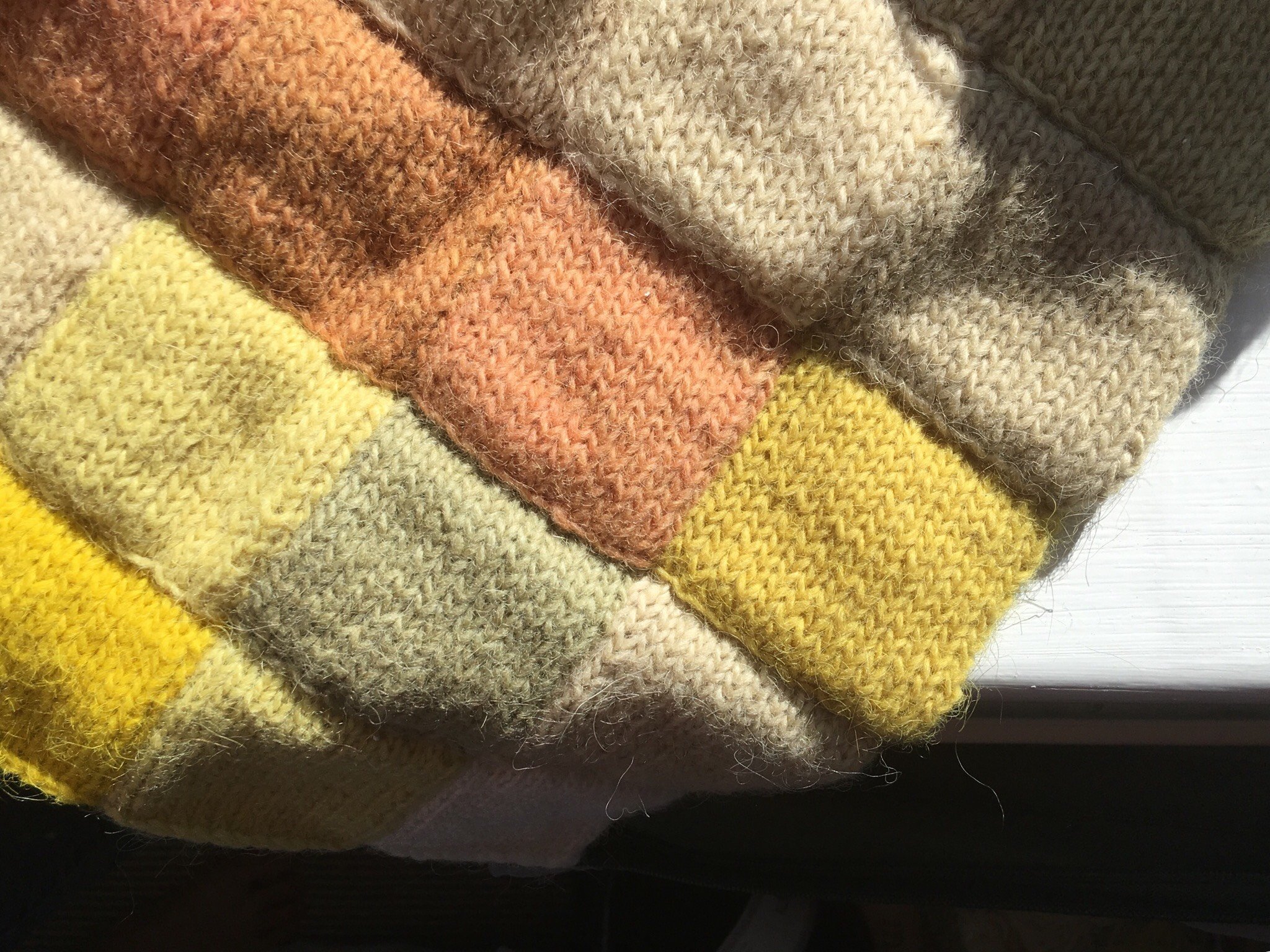river maps
2017 - Present
In river maps, I gather plant materials from around a specific river, where I have ancestral or other family connections (or have been invited to connect to). Each plant is methodically simmered to extract colour, in (if applicable) water from the river or similar source, and then used to dye fibres. In stitching the fibre pieces together, strange relationships form – plants that appear different bleed similar shades, come from the same whakapapa, share roots.
Colonial structures use maps to “map territory, to survey land, to establish boundaries, and to mark the limits of colonial power.”* Counter to the history of maps as political tools, designed to clearly show what is considered to be of material value, and diminish what is not, river maps draws instead on indigenous forms of mapping. Maps that tell of “our movements and wonderings (not wanderings) across a space,”** that are ever-shifting, and based on a different set of values, values of kaitiakitanga, mōhiotanga, and mātauranga.
References:
* Linda Tuhiwai Smith, Decolonising Methodologies: Research and Indigenous Peoples (London: Zed Books Ltd, 2012), 55
**Natalie Diaz, introduction to “New Poetry by Queer Indigenous Women,” Lithub (April 12, 2018)
A Map of the Tāmaki Estuary, June 2017. Hand-knit New Zealand wool yarn and natural dyes foraged from around the Tāmaki Estuary, Auckland, NZ
Two Maps of the River Blanda, September 2018. Hand-knit Icelandic lopi and New Zealand wool yarn, and natural dyes foraged from around the River Blanda, Blönduós, Iceland
A Map of the Tongapōrutu River, April 2019. Patchworked vintage New Zealand wool blankets and natural dyes foraged from around the Tongapōrutu River, Taranaki, NZ
—
First iteration shown in Estuary Art & Ecology Awards, Malcolm Smith Gallery, 2017 (winner of People's Choice award)
Second iteration shown in Te haerenga tuatahi ki Tongapōrutu, St Paul St Gallery Three (now Te Wai Ngūtu Kākā), 2019
Third iteration shown in Labour of Body, Corban Estate Arts Centre, 2019







